As we approach the end of the cropping season, now is the perfect time to take stock of the structural quality of your soil and develop a plan to remedy damage.
Compaction and soil structural damage are not limited to headlands and can occur anywhere in the field, especially where machinery has operated in wet conditions. Last autumn was a prime example of this, although arguably the drought in spring may have helped address some of these issues through cracking of the ground.
Good soil structure underpins crop production. The decline in structural quality can often lead to soil degradation and compaction. This results in a range of knock-on effects, such as reduced water infiltration and air permeability and increased runoff,
leading to poor root establishment and reduced fertiliser use efficiency.
However, soil structure is relatively easy to visually assess in the field. Every grower should at least aim to assess the known problem areas of fields after harvest, if ground conditions allow.
Teagasc, UCD and the Department of Agriculture have published a simple handbook to help growers assess soil structure. The process is simplified to A, B and C.
There are three parts to soil structure: form, stability and resilience. Structural form is perhaps the most important element when discussing structure. Form can be described as the architecture of the soil, because it refers to the physical arrangement of its building blocks. The building blocks or aggregates are naturally formed when clumps of sand, silt and clay particles stick together.

Figure 1. Soil aggregates are squashed together in compacted soils
The micro- and macro-pores, cracks, gaps and spaces, both within and between the aggregates, are referred to as the soil porosity.
In structurally sound soils, water will start to drain down through the soil, soaking into aggregates and filling the micro-pores, draining down through the macro-pores. Macro-pores allow the rapid drainage of excess water, while micro-pores help to retain or store some water to sustain plant and soil life.

Figure 2. Water draining down through aggregates.
However, when the structure is damaged by compaction, the soil aggregates are squashed together, reducing the amount of macro-pores and in severe cases, reducing the amount of micro-pores. In this case, water will be restricted from draining through the soil.
Soil structure can be visually assessed by breaking down a sample of soil by hand and looking at the different features.
The results from this visual inspection will not only indicate the soil structural quality, but also inform future management practices. There are two visual soil evaluation techniques which are commonly used on tillage lands. These are the visual evaluation of soil structure (VESS) method and the double spade method.

Figure 3. VESS sample preparation.
For assessing tillage topsoil structure, it is recommended to use the VESS method. This assesses the soil to 25cm depth. If you are worried about what is happening below the cultivation zone (eg plough pans), use the double spade method, which assesses to a depth of 40cm.

Figure 4. Double spade sample preparation.
Both methods require a spade, a measuring tape, a plastic sheet or tray and a knife or trowel. VESS takes roughly 15 minutes and the double spade method takes 20 minutes per assessment. These assessments should be carried out when the soil is moist, but not waterlogged.
Preparing the soil for assessment
Choose a problem area in the field and prepare the soil for assessment. VESS involves extracting a sample block of topsoil out of the ground, while double spade involves assessing the wall of a soil pit.
VESS
Dig a hole, wider and deeper than an intended sample block. Do not stand on or lean the spade against the sample block.Mark out and carefully loosen the sample block with straight spade insertions.Carefully lever out the sample block on the spade and place on a plastic sheet or tray. 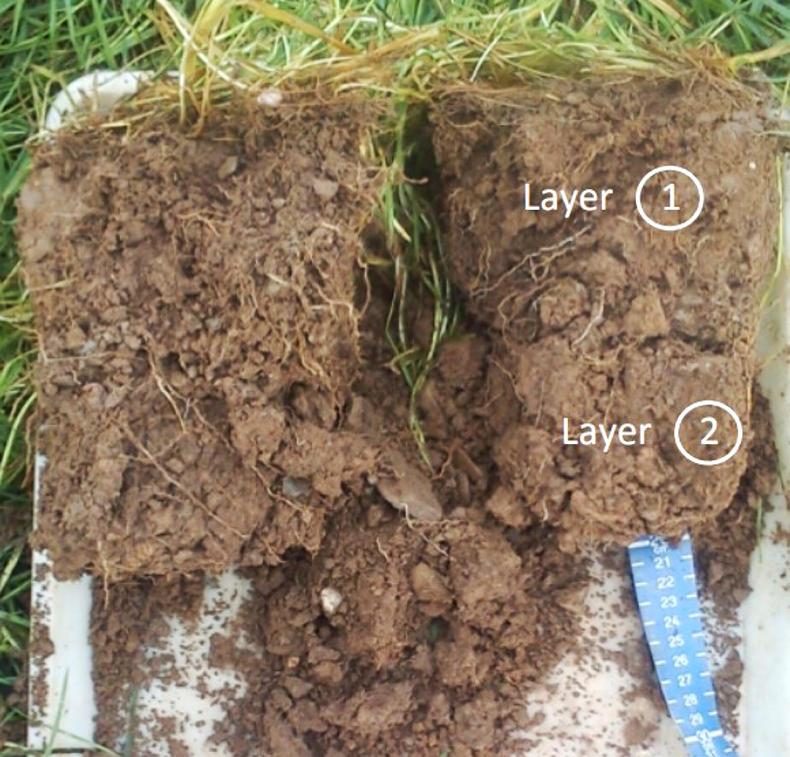
Figure 5. VESS soil layers with different structure.
Double spade
Carefully dig a soil pit (trench), roughly 45cm deep, 50cm long and 30cm wide. While digging, do not stand on, lean the spade against or damage the wall of the soil pit that is to be assessed.
Figure 6. Double spade soil layers with different structure.
Soil features to examine
The soil features examined are the same for the three methods, however individual score sheets are available for each method.
This section gives a general overview of how the soil’s features relate to soil quality.
Soil layers with different structure: Identify the soil layers with different structure by simply looking at the soil, or by comparing how easy it is to gently stick a trowel or knife tip into the soil. Different layers may have different resistance.Aggregate size: For each layer, gently break up the soil and assess the size of aggregates.
Figure 7. Aggregate size.
Aggregate shape: Assess the shape of the aggregates. The sharper (more angular) the aggregates, the poorer the soil structural quality. 
Figure 8. Aggregate shape.
Aggregate strength: Try to break the aggregates, first between your finger and thumb, then with one hand. Assess how easy it is to break. 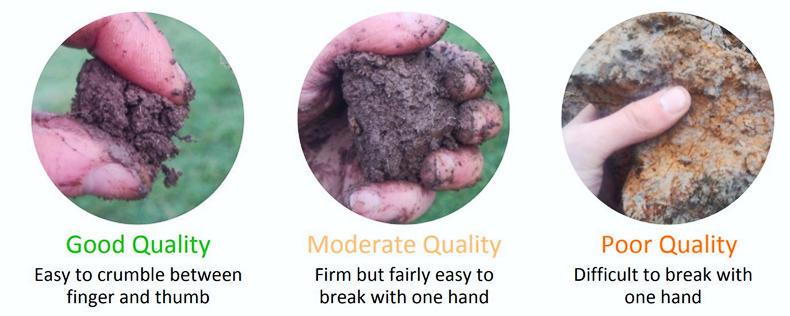
Figure 9. Aggregate strength.
Aggregate porosity: Break aggregates open and examine the porosity within. If aggregates are too small to examine inside (ie aggregates 1cm to 2cm in width), it is a sign that the entire soil layer has good porosity.
Figure 10. Aggregate porosity.
Rooting: Assess root growth within the layer and within aggregates. Fibrous roots should be able to grow unrestricted through the soil layers and aggregates, while taproots should not be distorted.
Figure 11. Rooting.
Soil colour and smell: Soil colour and smell can indicate the drainage status of the soil. Soil should smell earthy but poor drainage can cause foul or putrid smells and is a sign of poor structural quality.
Figure 12. Soil colour and smell.
Damaged soil structure has a cost, in terms of production, economics and the environment.
From the information gained from section B, growers must then determine how to conserve, enhance and fix soil structure in order to maximise the production potential of their fields.
This section describes the key considerations to help achieve this.
Know your soil structure
Once you visually assess your soil structure, determine whether your management is having a negative impact and if there are problems which need to be addressed. Be mindful of the depth and position of the damage as this will help determine what is necessary to fix the problem.
For example, if the damage is near the surface (0cm to 15cm in depth), the soil may recover naturally by the action of the roots, adjusting establishment methods, earthworms and other soil organisms. If the damage is severe and occurs deeper (>15cm in depth), then mechanical intervention may be necessary.
Prevention is better than cure
Preventing soil structural damage is far better than having to fix it, especially subsoil compaction. Research suggests compaction below 40cm in depth may be semi-permanent. The following steps should be routinely used to prevent damage:
Avoid machinery and livestock traffic on wet soils: Soil structure is weaker when wet and prone to damage. When possible, avoid driving or cultivating in wet conditions. Lighten the load: When driving machinery across soils, stick to tramlines or straight passes and avoid trafficking the entire field, even in dry conditions. Try also to reduce axle loads, lower tyre pressures and use wider tyres, dual wheels or tracks. Alternate the management impact depth: Where possible, aim to vary the depth which the soil is cultivated to. A compacted layer may form if cultivation is conducted to the same depth each year.Roots: Encourage as much rooting mass as possible to develop each year. Planting cover crops with various species is a great opportunity to introduce rooting diversity and build up soil organic matter.Enhance soil structural stability and resilience: Soil organic matter (SOM) is key to soil stability as it helps form soil aggregates by gluing soil particles together. Aim to increase SOM through the use of organic manures, cover crops, chopping straw etc. Worst case scenario: mechanical intervention
Where soil structure is very badly damaged and natural recovery is not possible, mechanical intervention may be necessary.
Subsoil loosening: Where severe structural damage has occurred below a ploughing depth (>25cm), subsoiling may be beneficial. Subsoilers are designed to cause shockwaves as the legs pass through the soil, creating cracks and fissures to the desired depth. However, for this to happen, the soil must be dry. If the soil is not dry, a subsoiler will simply smear the soil at depth. 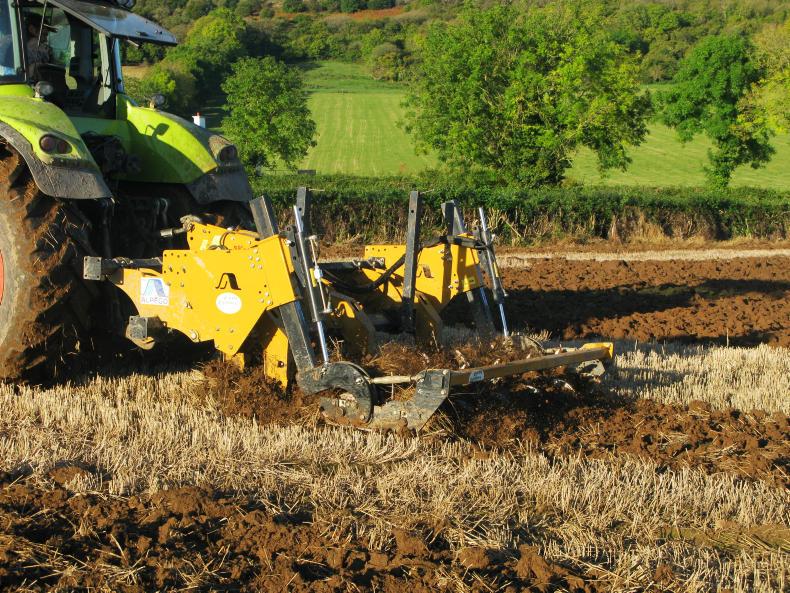
Figure 13. Subsoiling can help bust compaction layers if soil conditions are correct .
Field drainage: As soil structure is weaker when wet, soils that are affected by high water tables or that are naturally poorly drained, will always be prone to structural damage. Field drainage may lessen the risk of compaction and help aerate the soil, creating a better environment for soil biology and plant roots. Ploughing: In some cases, where structural damage occurs within 25 cm depth, ploughing may be useful to alleviate problems. However, ground conditions must be good. Read more
New tool to measure soil compaction
Farmer Know-How: visual evaluation of soil structure
Good structure indicates healthy soil conditions
As we approach the end of the cropping season, now is the perfect time to take stock of the structural quality of your soil and develop a plan to remedy damage.
Compaction and soil structural damage are not limited to headlands and can occur anywhere in the field, especially where machinery has operated in wet conditions. Last autumn was a prime example of this, although arguably the drought in spring may have helped address some of these issues through cracking of the ground.
Good soil structure underpins crop production. The decline in structural quality can often lead to soil degradation and compaction. This results in a range of knock-on effects, such as reduced water infiltration and air permeability and increased runoff,
leading to poor root establishment and reduced fertiliser use efficiency.
However, soil structure is relatively easy to visually assess in the field. Every grower should at least aim to assess the known problem areas of fields after harvest, if ground conditions allow.
Teagasc, UCD and the Department of Agriculture have published a simple handbook to help growers assess soil structure. The process is simplified to A, B and C.
There are three parts to soil structure: form, stability and resilience. Structural form is perhaps the most important element when discussing structure. Form can be described as the architecture of the soil, because it refers to the physical arrangement of its building blocks. The building blocks or aggregates are naturally formed when clumps of sand, silt and clay particles stick together.

Figure 1. Soil aggregates are squashed together in compacted soils
The micro- and macro-pores, cracks, gaps and spaces, both within and between the aggregates, are referred to as the soil porosity.
In structurally sound soils, water will start to drain down through the soil, soaking into aggregates and filling the micro-pores, draining down through the macro-pores. Macro-pores allow the rapid drainage of excess water, while micro-pores help to retain or store some water to sustain plant and soil life.

Figure 2. Water draining down through aggregates.
However, when the structure is damaged by compaction, the soil aggregates are squashed together, reducing the amount of macro-pores and in severe cases, reducing the amount of micro-pores. In this case, water will be restricted from draining through the soil.
Soil structure can be visually assessed by breaking down a sample of soil by hand and looking at the different features.
The results from this visual inspection will not only indicate the soil structural quality, but also inform future management practices. There are two visual soil evaluation techniques which are commonly used on tillage lands. These are the visual evaluation of soil structure (VESS) method and the double spade method.

Figure 3. VESS sample preparation.
For assessing tillage topsoil structure, it is recommended to use the VESS method. This assesses the soil to 25cm depth. If you are worried about what is happening below the cultivation zone (eg plough pans), use the double spade method, which assesses to a depth of 40cm.

Figure 4. Double spade sample preparation.
Both methods require a spade, a measuring tape, a plastic sheet or tray and a knife or trowel. VESS takes roughly 15 minutes and the double spade method takes 20 minutes per assessment. These assessments should be carried out when the soil is moist, but not waterlogged.
Preparing the soil for assessment
Choose a problem area in the field and prepare the soil for assessment. VESS involves extracting a sample block of topsoil out of the ground, while double spade involves assessing the wall of a soil pit.
VESS
Dig a hole, wider and deeper than an intended sample block. Do not stand on or lean the spade against the sample block.Mark out and carefully loosen the sample block with straight spade insertions.Carefully lever out the sample block on the spade and place on a plastic sheet or tray. 
Figure 5. VESS soil layers with different structure.
Double spade
Carefully dig a soil pit (trench), roughly 45cm deep, 50cm long and 30cm wide. While digging, do not stand on, lean the spade against or damage the wall of the soil pit that is to be assessed.
Figure 6. Double spade soil layers with different structure.
Soil features to examine
The soil features examined are the same for the three methods, however individual score sheets are available for each method.
This section gives a general overview of how the soil’s features relate to soil quality.
Soil layers with different structure: Identify the soil layers with different structure by simply looking at the soil, or by comparing how easy it is to gently stick a trowel or knife tip into the soil. Different layers may have different resistance.Aggregate size: For each layer, gently break up the soil and assess the size of aggregates.
Figure 7. Aggregate size.
Aggregate shape: Assess the shape of the aggregates. The sharper (more angular) the aggregates, the poorer the soil structural quality. 
Figure 8. Aggregate shape.
Aggregate strength: Try to break the aggregates, first between your finger and thumb, then with one hand. Assess how easy it is to break. 
Figure 9. Aggregate strength.
Aggregate porosity: Break aggregates open and examine the porosity within. If aggregates are too small to examine inside (ie aggregates 1cm to 2cm in width), it is a sign that the entire soil layer has good porosity.
Figure 10. Aggregate porosity.
Rooting: Assess root growth within the layer and within aggregates. Fibrous roots should be able to grow unrestricted through the soil layers and aggregates, while taproots should not be distorted.
Figure 11. Rooting.
Soil colour and smell: Soil colour and smell can indicate the drainage status of the soil. Soil should smell earthy but poor drainage can cause foul or putrid smells and is a sign of poor structural quality.
Figure 12. Soil colour and smell.
Damaged soil structure has a cost, in terms of production, economics and the environment.
From the information gained from section B, growers must then determine how to conserve, enhance and fix soil structure in order to maximise the production potential of their fields.
This section describes the key considerations to help achieve this.
Know your soil structure
Once you visually assess your soil structure, determine whether your management is having a negative impact and if there are problems which need to be addressed. Be mindful of the depth and position of the damage as this will help determine what is necessary to fix the problem.
For example, if the damage is near the surface (0cm to 15cm in depth), the soil may recover naturally by the action of the roots, adjusting establishment methods, earthworms and other soil organisms. If the damage is severe and occurs deeper (>15cm in depth), then mechanical intervention may be necessary.
Prevention is better than cure
Preventing soil structural damage is far better than having to fix it, especially subsoil compaction. Research suggests compaction below 40cm in depth may be semi-permanent. The following steps should be routinely used to prevent damage:
Avoid machinery and livestock traffic on wet soils: Soil structure is weaker when wet and prone to damage. When possible, avoid driving or cultivating in wet conditions. Lighten the load: When driving machinery across soils, stick to tramlines or straight passes and avoid trafficking the entire field, even in dry conditions. Try also to reduce axle loads, lower tyre pressures and use wider tyres, dual wheels or tracks. Alternate the management impact depth: Where possible, aim to vary the depth which the soil is cultivated to. A compacted layer may form if cultivation is conducted to the same depth each year.Roots: Encourage as much rooting mass as possible to develop each year. Planting cover crops with various species is a great opportunity to introduce rooting diversity and build up soil organic matter.Enhance soil structural stability and resilience: Soil organic matter (SOM) is key to soil stability as it helps form soil aggregates by gluing soil particles together. Aim to increase SOM through the use of organic manures, cover crops, chopping straw etc. Worst case scenario: mechanical intervention
Where soil structure is very badly damaged and natural recovery is not possible, mechanical intervention may be necessary.
Subsoil loosening: Where severe structural damage has occurred below a ploughing depth (>25cm), subsoiling may be beneficial. Subsoilers are designed to cause shockwaves as the legs pass through the soil, creating cracks and fissures to the desired depth. However, for this to happen, the soil must be dry. If the soil is not dry, a subsoiler will simply smear the soil at depth. 
Figure 13. Subsoiling can help bust compaction layers if soil conditions are correct .
Field drainage: As soil structure is weaker when wet, soils that are affected by high water tables or that are naturally poorly drained, will always be prone to structural damage. Field drainage may lessen the risk of compaction and help aerate the soil, creating a better environment for soil biology and plant roots. Ploughing: In some cases, where structural damage occurs within 25 cm depth, ploughing may be useful to alleviate problems. However, ground conditions must be good. Read more
New tool to measure soil compaction
Farmer Know-How: visual evaluation of soil structure
Good structure indicates healthy soil conditions



















 This is a subscriber-only article
This is a subscriber-only article





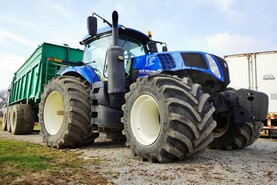
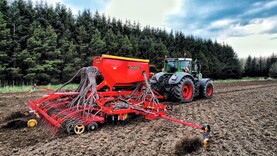



SHARING OPTIONS: